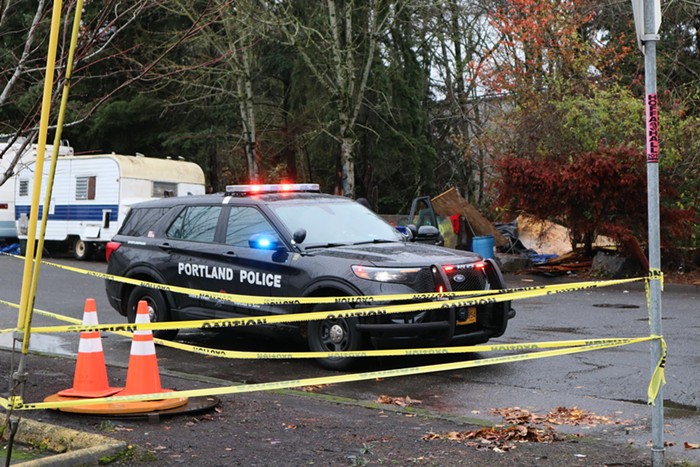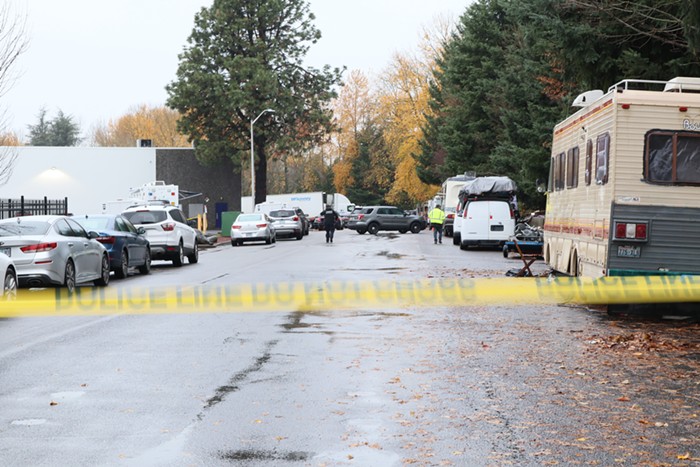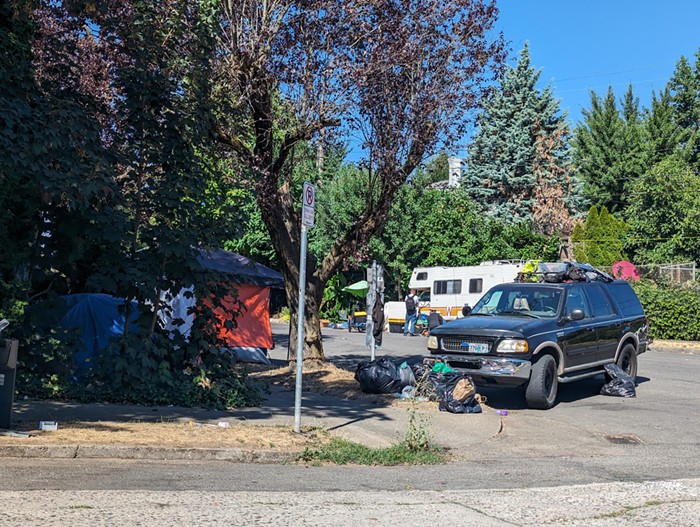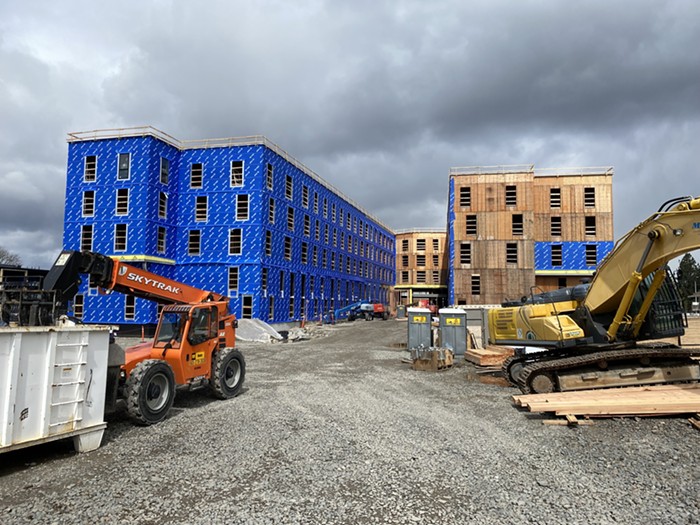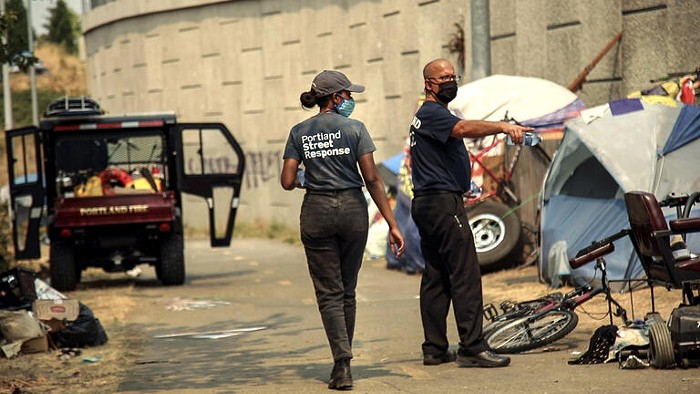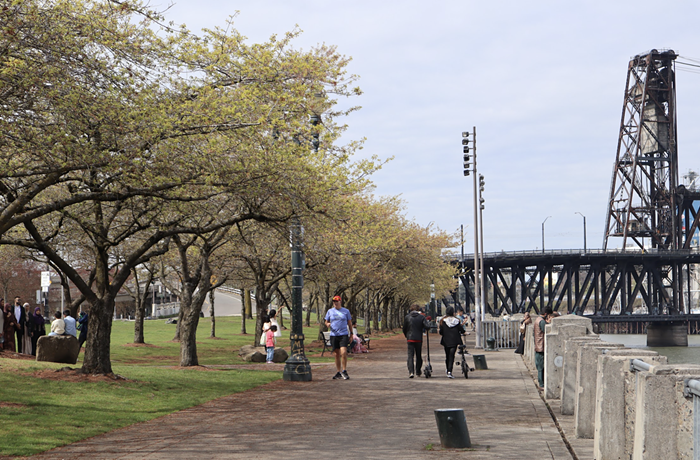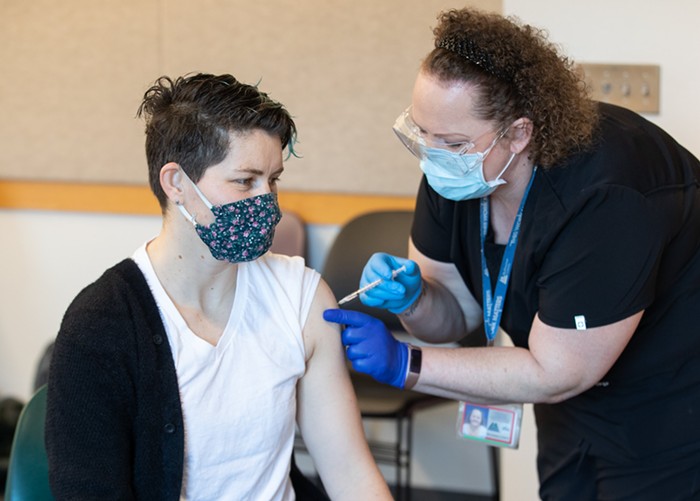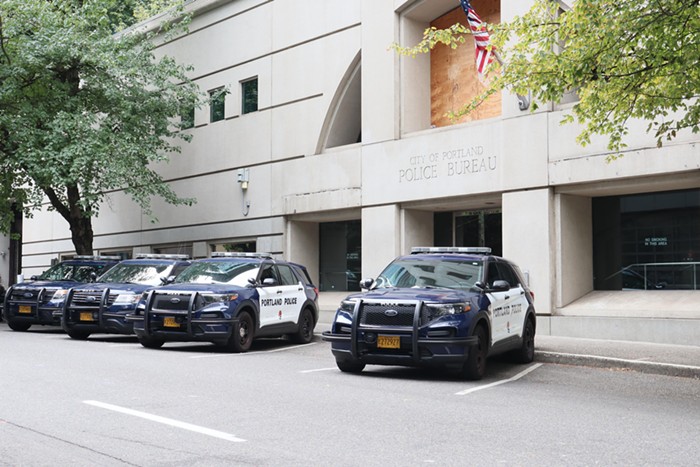SENATOR RON WYDEN, in fiery form after learning of worrisome carcinogens in Portland's air, called it "a regulatory loophole that's the size of a lunar crater."
Portlanders had learned weeks before that two Portland art glass factories—Bullseye Glass and Uroboros Glass—had been spewing toxic heavy metals into the air, unfiltered, for decades. Worse, it looked like existing air regulations totally allowed it.
Wyden appeared with Senator Jeff Merkley and Representative Earl Blumenauer at a February 18 press conference to call for tougher federal rules. He needn't have gone to the trouble.
It turns out US Environmental Protection Agency (EPA) rules that have been on the books since 2007 were all state and federal regulators needed to curb the pollution that's caused so much outcry since early February. If those regulations had been followed as the EPA now insists they were intended to be, the rules would have required both Bullseye and Uroboros to install highly effective pollution controls on many, if not all, of their furnaces no later than December 2009.
It's a bombshell in the ongoing saga, but it got scant local media interest when the Oregon Department of Environmental Quality (DEQ) issued a low-key media release last week.
"The [DEQ] has determined that two Portland glass manufacturers are subject to regulation under federal air quality rules to control hazardous air pollutants, including metals," that release said. "This means the companies are now legally required to install pollution control equipment and follow other requirements for testing, monitoring, and record keeping."
It also means alarming arsenic and cadmium levels the DEQ turned up near Bullseye last year would likely not have existed if regulators had been on the ball. Those findings have since led neighbors to sue the glass company, claiming it forced harmful compounds on them.
So what the hell happened?
For starters, let's look quickly at the rules the EPA now says apply to Uroboros and Bullseye. Drafted nine years ago, they regulate glass furnaces that spew hazardous air pollutants like cadmium, chromium, and arsenic—so long as those furnaces make more than 50 tons of glass a year and operate "continuously."
It's that last designation that got regulators all screwed up. As the Mercury reported last month ["Bullseye Glass Skirted EPA Regulation by Making Murky Claims About 'Periodic' Furnaces," Blogtown, March 4], Bullseye and Uroboros have successfully claimed to run "periodic" furnaces, rather than "continuous" ones.
That's an odd argument when you look at the furnaces we're talking about. Aside from rare maintenance, they never sink far below 2,000 degrees Fahrenheit from the time they're fired up until they're replaced a couple of years later.
But no one ever bothered to really look at Bullseye or Uroboros' operations to see if their furnaces deserved an exemption. At least not until March 9—five days after the Mercury's story questioning the designation—when the DEQ decided to ask the EPA.
"DEQ was operating under the assumption that Bullseye and Uroboros' furnaces were not continuous," says Leah Feldon, a manager with the DEQ's Office of Compliance and Enforcement. Feldon says that assumption "is consistent with other states' interpretations as well. Our interpretation was based on EPA's rule and the preamble."
But the EPA's opinion turns out to be exactly the opposite. The "periodic" furnaces exempted from regulations have very little resemblance to those at Bullseye and Uroboros, the agency says.
"This revision was meant to address the concerns of small operators or artisanal shops, which may turn kilns/furnaces on and off regularly," reads an April 12 letter the EPA sent state officials. "The furnaces you describe are kept hot (operated) for a year or more between rebrickings and produce glass on a routine schedule."
That's got the DEQ scrambling to get even more information about furnaces at Uroboros and Bullseye so they can mandate regulations. The factories have until May 2 to provide details that regulators should have sought nine years ago.
To be fair, it's not just a lack of rigor by state officials at fault here. Despite crafting the rules, the EPA "has not previously made a determination about whether the rule applies to these particular facilities," according to a statement the agency sent the Mercury.
"We recognize that there may be some confusion in the art glass industry about this rule," the agency wrote in its letter to the DEQ.
At least one member of the glass industry says the EPA's position is a reversal. Uroboros owner Eric Lovell issued a statement April 14 railing against "inaccurate or barely researched 'journalism,'" and saying there's no proof Uroboros has released "excessive or even detectable emissions of heavy metals."
"This week the EPA decided to reinterpret their own regulations for the glass industry's smallest members," wrote Lovell, who did not respond to an interview request. Not only did that reinterpretation change the "published interpretations" of the rules' author, but "five state regulator's [sic] interpretations," he said.
Still, Lovell wrote he doesn't "dispute the appropriateness of this new interpretation," and noted that Uroboros is well on its way to installing pollution controls that will satisfy the requirements. (Bullseye has already installed a filter on one furnace, and resumed melting cadmium after a month break.) He estimated costs to an American industry made up of "just six manufacturers" will be $2.5 to $3.5 million.
"This investment may [be] too much for several of them to bear," Lovell wrote. He also appeared to be angling for a public subsidy for those costs, writing: "the public's help is needed for [glass factories] to meet the goals of the new regulations in such a short timeframe."
Among Lovell's final pleas to supporters? "Raise a fuss with your legislators."
Maybe don't bother with Wyden, though.
"While [the EPA's] letter cites confusion between federal and state regulators," the senator said in a statement to the Mercury, "that's no excuse for the regulatory void that left Portland families exposed to toxic air pollution."
